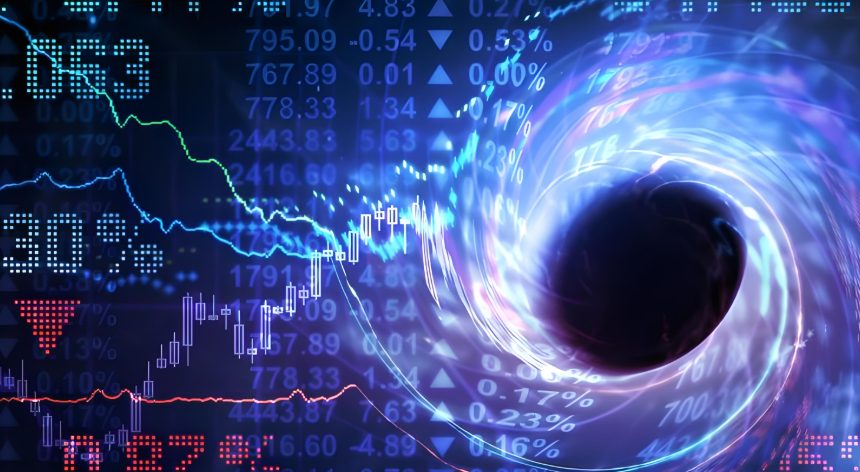The AI Investment Boom
Advertisements
As we reflect on the passage of time, it’s hard to ignore the striking similarities between current trends in artificial intelligence (AI) investments and the dot-com bubble that surged in the late 1990s and early 2000s. Twenty-five years ago, the financial landscape was riddled with online startups, spurred on by what was widely referred to as "irrational exuberance." Fast forward to today, where a fresh wave of AI investment is dominating headlines globally, raising pertinent questions: Are we on the verge of another financial reckoning similar to what we witnessed a quarter-century ago?
The year 2000 marked a significant peak for the stock market, especially for tech companies. The Dow Jones Industrial Average reached its summit in January, shortly followed by historic high figures for the S&P 500 and the NASDAQ Composite Index. Just a couple of months later, financial analysts noted an alarming trend; a plethora of internet startups had entered a precarious cycle of excessive spending, fueled by massive venture capital, but ultimately faced a catastrophic downfall. By the end of the decade, many of these companies had crumbled, leading to a significant evaporation of investor wealth.
In his latest column for Grant's Interest Rate Observer, financial author James Grant highlighted how during the internet bubble, the "over-excitement, over-purchasing, and over-building" among tech firms led to an inevitable collapse. Today, a similar narrative appears to be unfolding within the realm of artificial intelligence. Tech behemoths worldwide are pouring billions into AI, with reports indicating that companies such as Meta, Microsoft, and Alphabet (Google's parent company) have plans to allocate around $200 billion to AI research and development by the end of 2024. This astronomical figure represents nearly a quarter of their annual revenues, akin to the excessive financial commitments observed during the dot-com era.
Moreover, the competitive landscape is evolving, with emerging AI companies like China-based DeepSeek reportedly developing AI technologies at costs that significantly undercut their U.S. counterparts. This raises a critical question: can the vast investments by American tech companies yield commensurate returns when alternative low-cost solutions are available on the global stage?

The intersection of government power and AI investment also warrants attention. The previous administration directed the Department of Defense and the Department of Energy to expedite the development of data center infrastructure, leasing federal land in the process. The current administration has built on these efforts, unveiling the "Gateway to the Stars" initiative with collaboration from influential companies like SoftBank, OpenAI, and Oracle, intending to funnel anywhere from $100 billion to $500 billion into this burgeoning field. Notably, the collective energy demands of new data center projects announced in the U.S. since the start of 2023 have been likened to the total output of 94 nuclear reactors – a staggering statistic that hints at an unsustainable consumption pattern.
This recent investment mania has ignited speculation over the potential formation of a new tech bubble, a concern echoed by industry observers. As fate would have it, January of this year also marked the 25th anniversary of the colossal $164 billion merger between AOL and Time Warner, which, at the time, heralded a new age of digital expansion but would later be remembered as one of the most significant value-destruction events in business history.
Since then, the conversation has shifted to bold offers such as Tesla CEO Elon Musk’s recent proposal to acquire OpenAI for a staggering $97.4 billion. In comparison to SoftBank’s proposed $40 billion investment in OpenAI, this potential valuation of around $300 billion stands as a striking indicator of market enthusiasm. Analyst Evan Lorenz from Grant’s team postulates that historical patterns suggest that peaks in industry fervor are frequently accompanied by massive merger and acquisition activity, hinting that the AI sector may be reaching a critical juncture.
Looking back, the 1920s broadcasting industry serves as a historical cautionary tale of speculative overreach. The stock price of Radio Corp. of America skyrocketed 200-fold during the 1920s, only to plummet an astonishing 98% following the stock market crash of 1929. Despite radio technology flourishing in the subsequent years, many investors suffered substantial losses. This scenario resonates deeply with the ongoing AI investment euphoria, which, while promising long-term productivity improvements, bears striking resemblances to previous speculative bubbles in terms of current market valuations, influx of capital, and government involvement.
Contrasted with the year 2000, when the U.S. federal budget was in surplus, today's financial outlook starkly diverges. The United States grapples with heightened deficits exacerbated by two Middle Eastern conflicts, the 2007-2009 financial crisis, the COVID-19 pandemic, and rising healthcare expenditures. The Congressional Budget Office projects an alarming average deficit projection of $2 trillion per year over the next decade, making up approximately 6.2% of GDP.
This burgeoning deficit indicates that future funding for the AI sector will have to compete against the growing debt financing needs of the U.S. government. With interest payments alone expected to account for 3.2% of GDP, surpassing the primary budget deficit margin (3.0%), the high capital demand from the AI sector may find itself challenged in this increasingly saturated financial landscape.
Despite varying contexts, the cycles of tech investment expansion and contraction seem to repeat themselves. From the broadcasting boom of the 1920s and the internet frenzy of the 2000s to today’s AI investment surge, the speculative fervor of the market remains unaltered. James Grant succinctly articulated this cycle through a historical lens, suggesting that the ebbs and flows of technological sectors are akin to echoes reverberating through time.
The approaching quarter-century mark since the internet bubble invites investors today to exercise caution. With this invigorating yet precarious atmosphere surrounding AI, one must ponder: is this surge truly the dawning of a technological revolution, or are we simply inches away from the next major financial bubble bursting?
Leave a comments